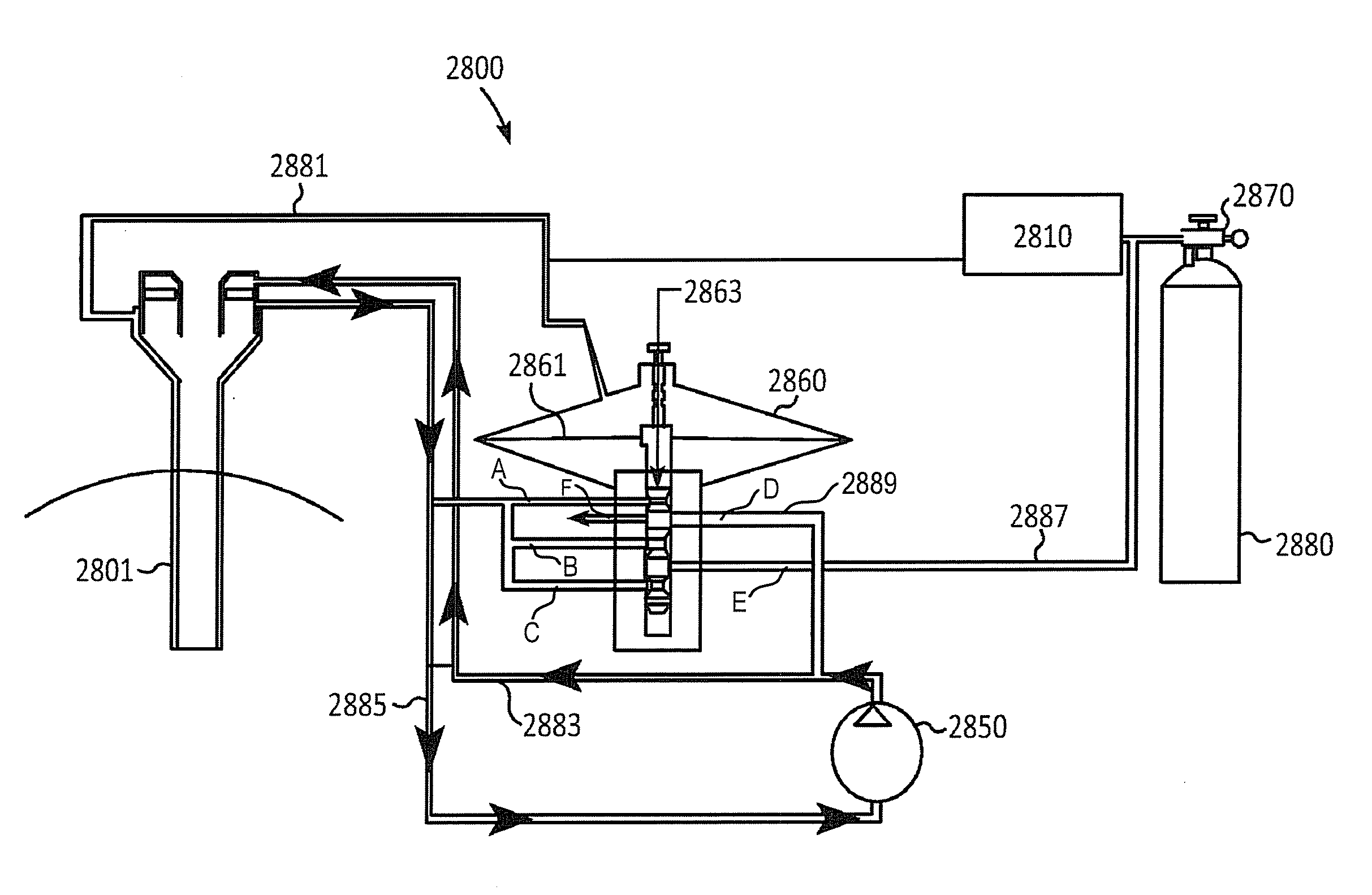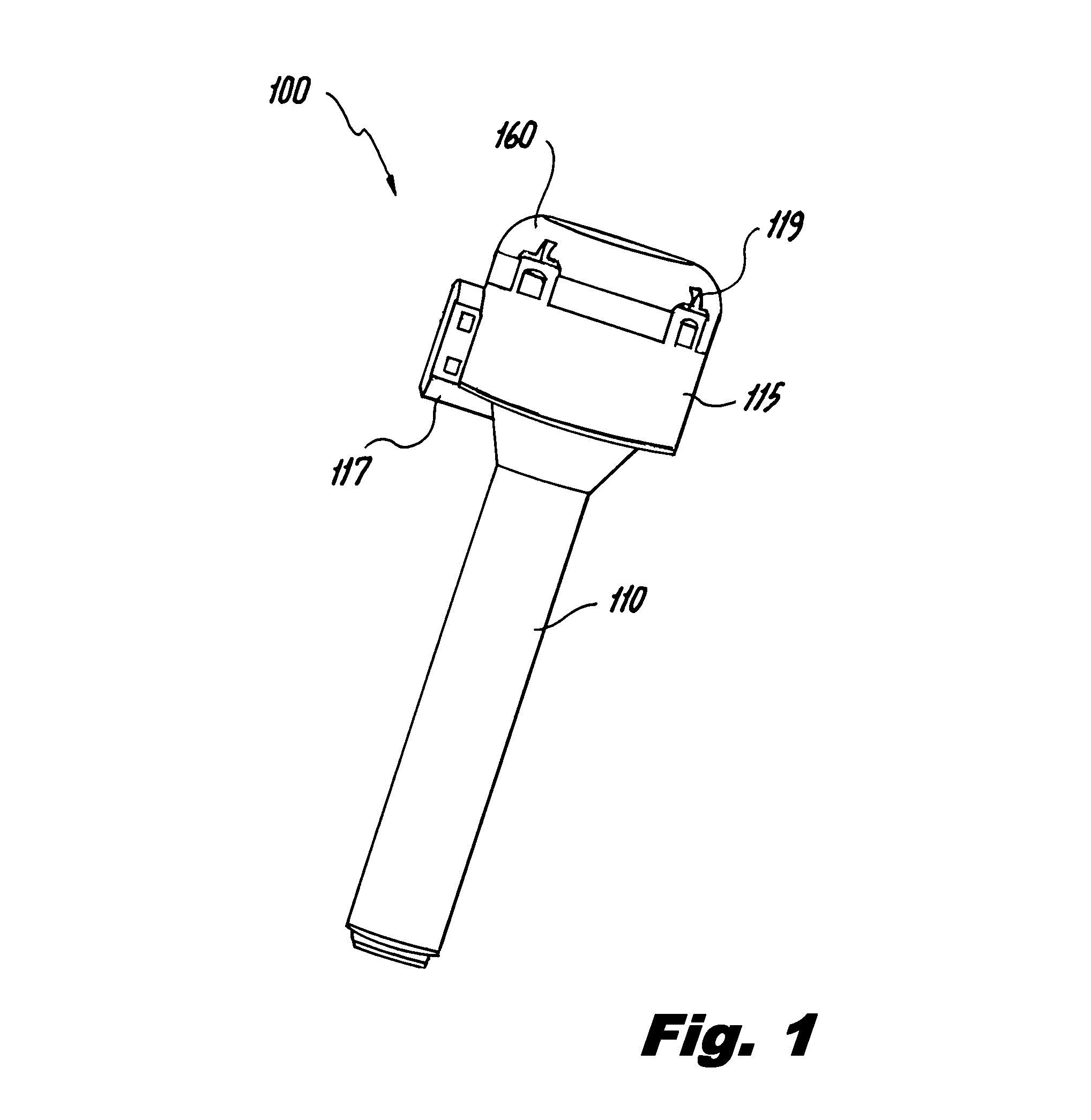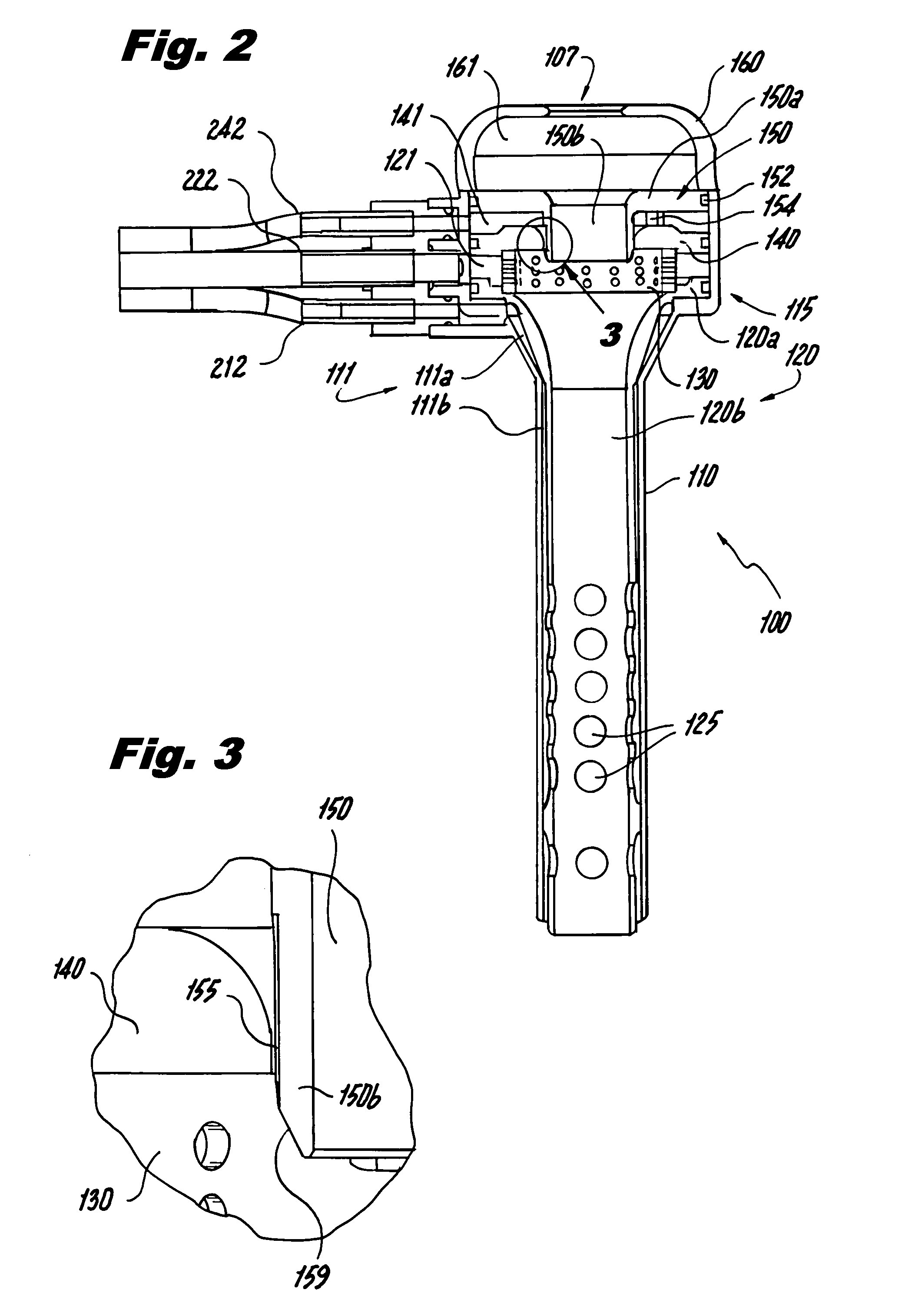System and method for improved gas recirculation in surgical trocars with pneumatic sealing
a technology of pneumatic sealing and gas recirculation, which is applied in the field of system and device for surgical access, can solve the problems of affecting the safety of surgical instruments, so as to prevent the loss of pressure within the cavity, the effect of inhibiting loss
- Summary
- Abstract
- Description
- Claims
- Application Information
AI Technical Summary
Benefits of technology
Problems solved by technology
Method used
Image
Examples
Embodiment Construction
[0094]The devices, systems and methods presented herein may be used for creating and maintaining a surgical pathway through the abdominal wall of a patient undergoing minimally invasive surgery. The present invention is particularly suited for minimally invasive surgeries performed under insufflation, such as laparoscopic removal of a gall bladder.
[0095]For the purposes of explanation and illustration, and not limitation, referring now to the drawings, wherein like reference numerals identify similar structural aspects of the subject trocars and systems therefor, a first exemplary embodiment of a trocar in accordance with the invention is shown in FIGS. 1-3, and is designated generally by reference character 100. Other embodiments of trocars in accordance with the invention, related systems or aspects thereof, are provided in subsequent figures, which are described in detail below.
[0096]FIG. 1 is a side view, and FIG. 2 is cross-sectional view of a trocar 100 constructed in accordan...
PUM
 Login to View More
Login to View More Abstract
Description
Claims
Application Information
 Login to View More
Login to View More - R&D
- Intellectual Property
- Life Sciences
- Materials
- Tech Scout
- Unparalleled Data Quality
- Higher Quality Content
- 60% Fewer Hallucinations
Browse by: Latest US Patents, China's latest patents, Technical Efficacy Thesaurus, Application Domain, Technology Topic, Popular Technical Reports.
© 2025 PatSnap. All rights reserved.Legal|Privacy policy|Modern Slavery Act Transparency Statement|Sitemap|About US| Contact US: help@patsnap.com



